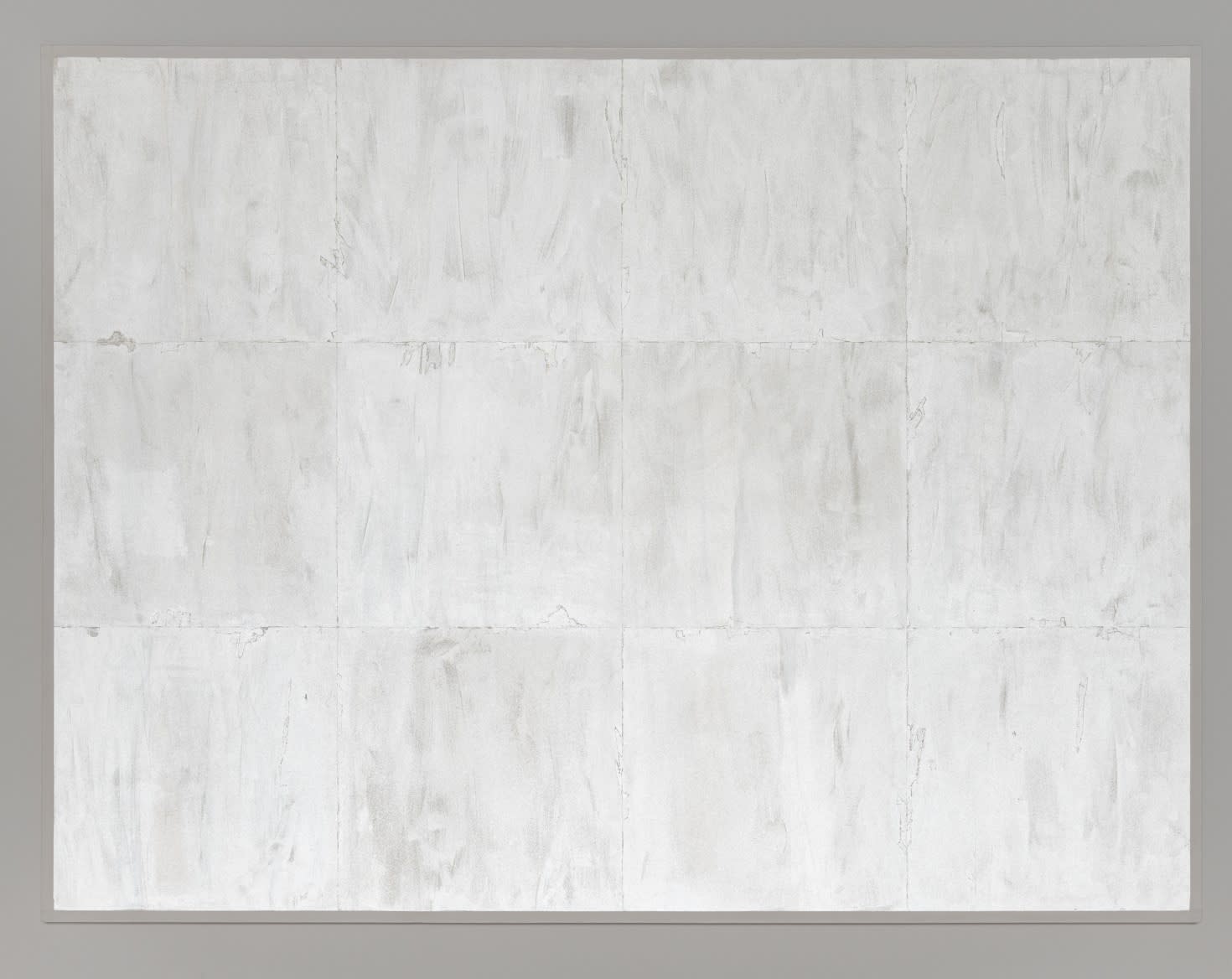By Peter Frank December 16, 2024
Now that the Finish/Fetish-Light & Space art of latter-day California has passed securely into the canon of contemporary art (if you can forgive such an oxymoron), exhibitions of its principal figures no longer feel as if they have something to prove. Yes, Light & Space is a form of Minimalism. Yes, that form is very different from, even arguably at aesthetic and ideological odds with, New York’s version of Minimal art (countering the logical positivism of “What you see is what you see” with the neo-Platonic challenge, “Is what you see what you see?”). Arguably, both coasts’ Minimalisms are site-specific, New York’s gritty obduracy contrasting with SoCal’s dissolute mist-infused beach light twinned with desert flare. Thus, a survey like “Luminaries of Light,” mounted walking distance to one of Orange County’s signature strands, seems almost born of its address.
 Corse, Mary. 'Untitled', 1986, Glass microbeads in oil on canvas, 78 x 102 inches
Corse, Mary. 'Untitled', 1986, Glass microbeads in oil on canvas, 78 x 102 inches
“Luminaries of Light” is thus an opportunity to see Light & Space art much as its makers saw it, in concept and in fabrication, and Honarkar Foundation Curator Genevieve Williams rose to the occasion – taking advantage as well of the fact that her small but exquisitely crafted exhibition space is tailor-made to and for this kind of whispering art. Something happens to objects in this space: they don’t so much disappear as play improbable little games of hide and seek with the visitor’s gullible eyes. Wall-mounted work, on the other hand, seems entirely absent until you’re almost upon it, and then it suffuses throughout its wall.
![]() Bell, Larry. '3D VD 11_24_14 A', 2014, 7mm Polyester and Film coated with Aluminum and Silicon Monoxide, 36 x 16 x 16 inches.
Bell, Larry. '3D VD 11_24_14 A', 2014, 7mm Polyester and Film coated with Aluminum and Silicon Monoxide, 36 x 16 x 16 inches.
A show comprising work by eleven of Light & Space’s pioneer generation pretty much requires such an installation, but the relative strength of the artworks selected determines the overall show’s ability to sustain visual interest and allure over an extended visit (as opposed to a 7-minute pirouette through a nicely lit space). Williams has chosen very well – precisely by not worrying about representing everybody equally, much less representing each and every artist by either classic or recent examples. Peter Alexander, in particular, seems favored with a healthy selection of early and late work. Larry Bell displays mostly laminate flatwork – but also the magically appearing lamp built into the corner of a corridor, the most startling and transporting work in the whole show. Helen Pashgian – who never seems to get her due even when she actually does, so elusive are her conjurations – is responsible for the runner-up to Bell’s concatenation, a wall-mounted acrylic block inside of which a wave – totally tubular, if you will – curls in space and yet not in time.
 Valentine, De Wain. 'Untitled (Circle)', 1975, Cast Polyester Resin, 34.5 x 2.25 inches
Valentine, De Wain. 'Untitled (Circle)', 1975, Cast Polyester Resin, 34.5 x 2.25 inches
Almost all the other artists in “Luminaries of Light” (alas, a show title as clunky as its contents are graceful) check in with gratifying, even superb examples. Mary Corse outdoes herself here, Laddie John Dill shows an expansive early sandwork, De Wain Valentine and Fred Eversley check in with nostalgia-inducing examples, and the Perceptualist trio of Robert Irwin, James Turrell, and Douglas Wheeler is repped by hermetic-seeming image and architectural studies. The one disappointment is Craig Kauffman, participating with but one wall-hung late work – a nice piece, to be sure, but oddly shy and closed off, giving little indication of Kauffman’s special virtuosity among his Light & Space peers.

